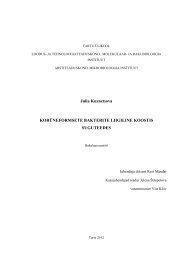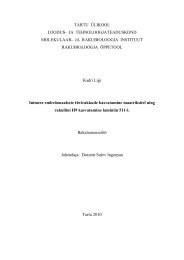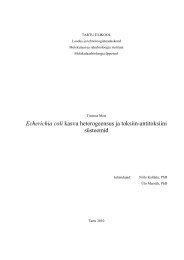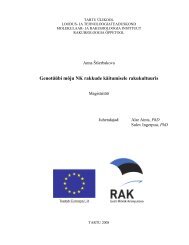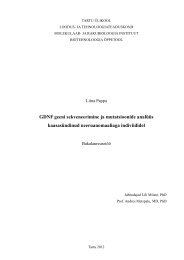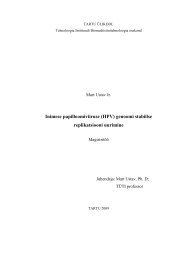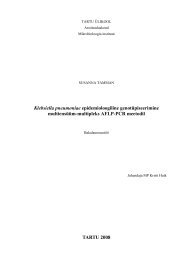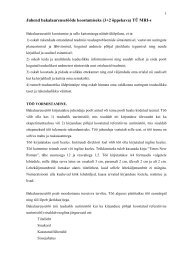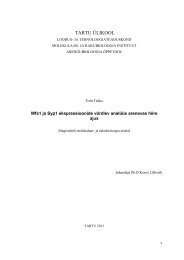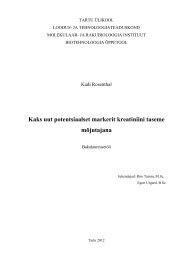Maternal variation in Huichol and Mixtec populations from Mexico
Maternal variation in Huichol and Mixtec populations from Mexico
Maternal variation in Huichol and Mixtec populations from Mexico
You also want an ePaper? Increase the reach of your titles
YUMPU automatically turns print PDFs into web optimized ePapers that Google loves.
* let dry at 37ºC for 5 m<strong>in</strong><br />
*add 10 μl formamide<br />
hold at room tºC<br />
* suspend load on the sequenc<strong>in</strong>g plat<br />
The reaction products were sequenced with an Applied Biosystems ABI 3730xl 96-capillary<br />
DNA analyzer.<br />
2.2.5 Statistical analysis<br />
Mutations were scored relative to the revised Cambridge Reference Sequence (rCRS)<br />
cover<strong>in</strong>g the nucleotide positions 16024- 680 (Andrews et al., 1999). For DNA sequence<br />
assembly <strong>and</strong> analysis software Sequencer 4.10.1 was used. Each deviation was confirmed by<br />
manual check<strong>in</strong>g on electropherogrammes. For reconstruct<strong>in</strong>g phylogenetic networks<br />
Network (version 4.6.1.0) <strong>and</strong> Network Publisher (version 1.1.0.7) software were used<br />
(B<strong>and</strong>elt et al., 1999).<br />
Haplogroup frequencies for Middle American <strong>populations</strong> are based on HVS I data <strong>and</strong> are<br />
comb<strong>in</strong>ed <strong>from</strong> current study <strong>and</strong> literature. They are shown <strong>in</strong> Figure 4. The detailed<br />
<strong>in</strong>formation for frequencies <strong>and</strong> references are <strong>in</strong> Supplementary materials (Suppl. Table1).<br />
For network analysis <strong>in</strong> addition to present study 658 published sequences <strong>from</strong> USA<br />
Southwest <strong>and</strong> <strong>Mexico</strong> <strong>populations</strong> were used (Table 1). The data was provided by Dr. Brian<br />
M. Kemp <strong>and</strong> has been previously published (Kemp et al., 2010). We restricted our haplotype<br />
analysis with this data to <strong>in</strong>clude samples where both, HVS 1 <strong>and</strong> 2, are available to <strong>in</strong>crease<br />
the resolution of analysis. The location of <strong>populations</strong> <strong>and</strong> their language families <strong>from</strong> Kemp<br />
et al., 2010 are shown <strong>in</strong> Table1.<br />
Median-jo<strong>in</strong><strong>in</strong>g haplotype networks were constructed separately for haplogroups A2, B2, C1<br />
<strong>and</strong> D1. The X haplogroup data was removed <strong>from</strong> the analysis, because it did not occur <strong>in</strong><br />
my analysed samples. The positions nps 16519, 16188.1, 16193.1, 16193.2, 309.1, 309.2,<br />
309.3, 315.1, 573.1, 573.2, 573.3, 573.4 were removed <strong>from</strong> the analysis because of their<br />
recurrent nature.<br />
19



